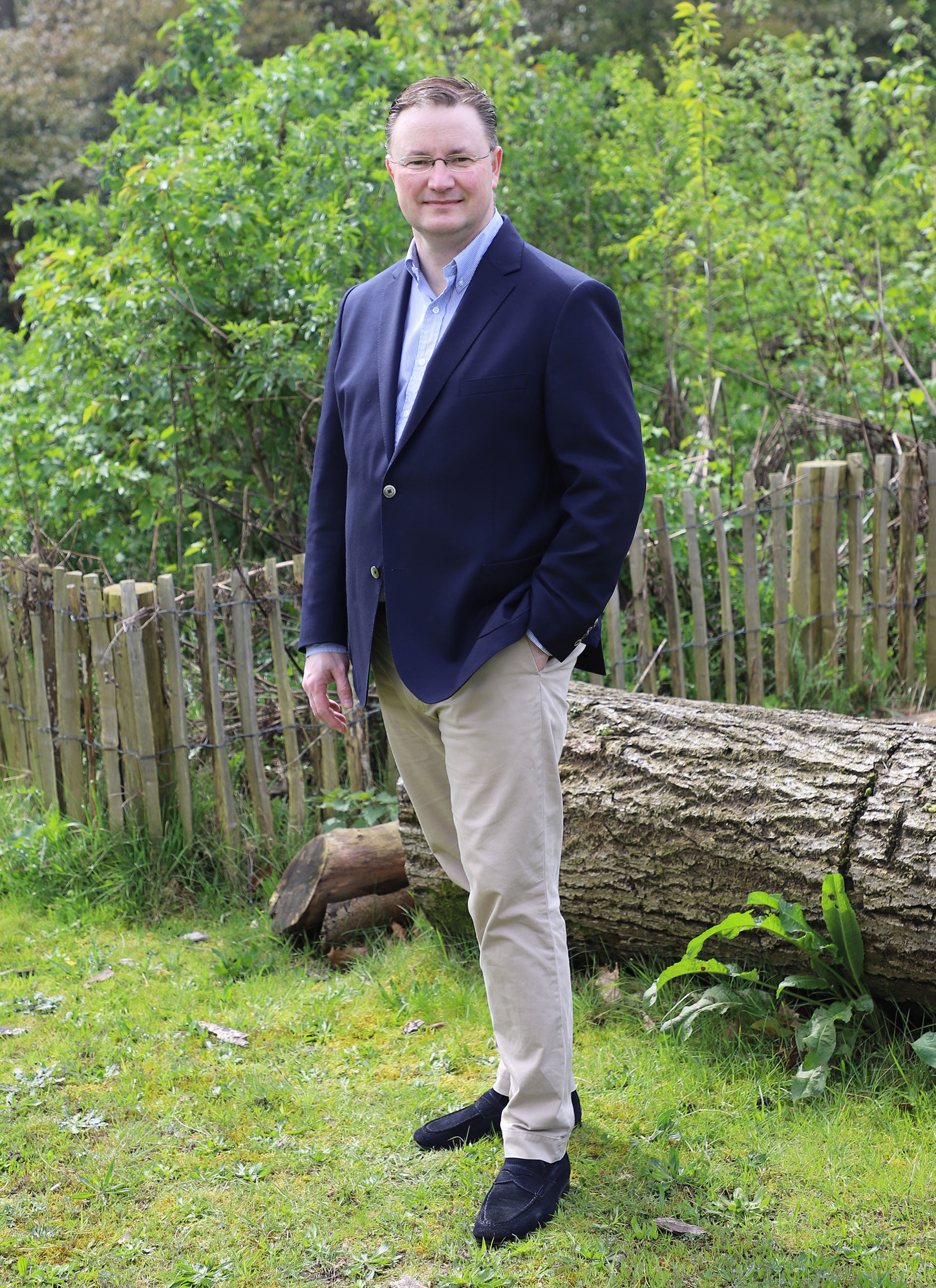The Landscape as a Starting Point for Sustainable Urbanisation
Sustainable urbanisation, climate adaptation and biodiversity require a design approach that takes the landscape as its starting point. In short, that is what new professor Steffen Nijhuis focuses on within his teaching and research on Landscape-based Urbanism. “The landscape offers structure, ecological coherence and variety, but is also flexible and multifunctional.” Steffen further explains his research and ambition in an interview.
Designing from the landscape
Our environment is the result of many years of human interaction with the natural landscape. For Steffen Nijhuis, it is essentially always about a landscape-based, regional approach that looks at the area from a systems perspective and also works with the people. Thus it is both on a large scale and hyperlocal. “The natural landscape is formed by its relief, water, soil, geological substrate, climate and the associated ecosystems. You also want to know the history of human intervention and its consequences. That combination is what has shaped the landscape over time.” Once that is mapped out, a design-based approach is used to develop a strategy with a long-term perspective. This could be a regional landscape park to manage urbanisation, or an alternative urban design for a new megacity. “All steps from analysis to breaking ground should contribute to larger goals such as sustainability, biodiversity and a climate-adaptive urban landscape.”

Equals at the table
“The generation of knowledge and solutions is a co-creative design process in which all stakeholders and their interactions play a crucial role. You need to understand the landscape system in which you're going to work,” says Steffen. “Local residents, such as farmers, often have more specific knowledge about their immediate environment than we do as researchers. We, in turn, contribute systems knowledge about the landscape and see the connections, with maps and drawings on the table.” Making things concrete and spatial leads to greater understanding and creates a foundation for achieving sustainable solutions on an equal basis. “This is a lengthy process. For example, I was involved in a project on estate landscapes in the province of Gelderland. At first, we were seen as “those experts coming to lay down the law.” But when they realised that we were genuinely interested and that we had something to contribute, this changed into a dialogue and then sitting at the table as equals. The language you speak and whether you can find a common denominator are essential in this respect. The landowners and farmers we worked with were deeply engaged with the landscape. They really love it. At the same time, they earn their money from it. By designing together, we were able to find solutions for sustainable spatial development while keeping the financial side in order for the farmers involved, for example.” Nijhuis knows from experience that such mechanisms play a role not only in projects in the Netherlands but also far beyond its borders.
Landscape connects people, scales, sectors and solutions.
Landscape connects
Landscape-conscious approaches frequently clash with current spatial development practices. Issues are often viewed only from the perspective of one sector and dealt with using standard solutions. As a result, we see the same types of solutions being applied everywhere, and more importantly, this leads to all kinds of problems. Steffen: “A very simple example: water always flows to the lowest places. Yet this is not taken into account because people mainly look at things based on their own problems: “There is space in that area so we can build.” Although such an approach can solve a specific problem, such as the housing shortage, it is replaced by another problem, such as flooding because that is where water collects.”
Whether it concerns the Netherlands or the rapidly urbanising delta in China, water systems are designed to drain water as quickly as possible. As climate change causes increasingly heavy rainfall and more river water comes from the hinterland, problems with flooding occur at the end of the water drainage system, which is often where cities are located. And during drier periods, there are water shortages because everything is drained so quickly.
Historical interventions play a role in this; land consolidation in the Netherlands is a good example.
Nijhuis: “We apply landscape logic in urbanising areas, both in the Netherlands and beyond our borders. As a result, cities become safer and more liveable, biodiversity increases, context-specific history remains visible, and an attractive and pleasant landscape for living, working and recreation." This can only be achieved by working across all scales. And when all sorts of sectors such as urban development, water management, nature management and agriculture are considered together. “Landscape connects people, scales, sectors and solutions.”
Five elements for impact
When asked how his approach will take shape in practice, Steffen's answer is clear. “It’s important to make an impact, to use science to make a difference in practice. We’re allowed to think big.” Steffen defines five elements to make that happen. Developing practice-related methods for knowledge development, strategy and design is important. Digital technologies such as GIS and AI have great potential in this regard. Investing in future generations of researchers and people in the field is an important means of advancing the ideas of Landscape-based Urbanism. Steffen is also committed to strengthening the relationship between the academic world and practice in his research. Working with governments and businesses is an essential part of this. And lastly, Steffen wants to work on setting up a centre of expertise in which Delft becomes the world’s go-to source of information on landscape-based sustainable urban development. “It would be nice to be consulted here in Delft on how best to do that.”
More information
- Steffen Nijhuis is head of the section Landscape Architecture of the Department of Urbanism in the Faculty of Architecture and the Built Environment.
- View prof.dr.ing. Steffen Nijhuis’ professor page.
- You can watch the inaugural address 'Landschapslogica' of Steffen Nijhuis here.
